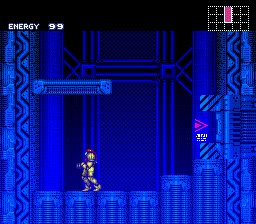Hi there,
thank you very much for the feedback! Please allow me to address a few points you raised, to give you a better idea of the design decisions behind them:
a) Movement physics in this game, bare bones as it may be, were extensively tweaked and tested. While I know exactly what you mean, and I perfectly understand where you’re coming from with your assessment, those mechanics are very unlikely to ever change; at least not in the way you suggested.
The reason being that this is highly subjective - I’ve personally played a couple of indie platformers where the character behaves exactly like you described (i.e. abruptly stopping mid-air, killing all momentum); alas this is just not how physics work, and feels very jarring and unnatural to me.
I imagine many others would say the same. Popular examples of platformers with proper momentum: Super Mario Bros 3, Super Metroid. I’ve never heard anyone argue that the controls of these games feel “less responsive” in any way.
b) Regarding the somewhat unclear tutorial text instructions, I will agree that in part they might be a bit confusing. However, they’re not wrong: you do in fact lose the ability to call Luna (not just the double jumping, since that is inherently tied to the squirrel) both whenever you die or lose all health as Bella.
I’ve just tested this, and it’s working as intended. The reason why you may not actually notice any difference upon respawning is because you appear right on top of the last acorn you picked up, instantly restoring that lost ability - as indicated by the same pickup sound. Bella doesn’t have double jumps (much like Luna doesn’t have any form of attack), and while it may not be evident from whatever content is currently there, this still factors heavily into the overall game and level design philosophy.
Seeing that the project is “on hold” at the moment, I wouldn’t be able to give you any date or schedule for when new content will be added though. My sincerest apologies.
c) The “Tower Attack” mode is not a “Bennet Foddy clone” but rather a “Jump King clone” if you so will. Therefore, since the mechanics in both games are nearly identical, they are likely not changing either. I understand that it’s not for everyone, but that’s precisely why it’s an optional mode, disconnected from the main story. The name is NOT meant as a genre identifier, but is subject to change, like most of the UI and flavor text still is. So I will keep your feedback in mind, since I had actually no idea that a genre called “tower attack” even exists.
d) I agree on the boss fight being a bit wonky and not very satisfying. Turning a stationary object (like a tree) into an enemy encounter poses a unique challenge that needs iterations and fine tuning. Again, I’ll keep your feedback in mind and am open to any kind of suggestions.
e) The “optional area” in the bottom left corner of the map is a prime example of “work in progress” - while nothing is stopping you from exploring, currently it serves no purpose, but will do so eventually. Whenever that time comes, please expect the area to be reworked to accommodate any changes made accordingly.
Thanks again, and I hope you had a wonderful holidays.


